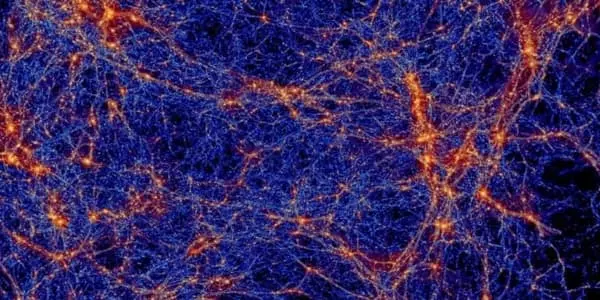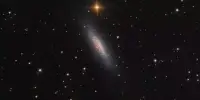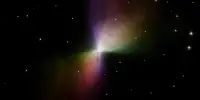Researchers present a robust experimental technique for investigating a specific dark energy theory. Their approach, dubbed ‘Gravity Resonance Spectroscopy,’ could bring researchers one step closer to unraveling one of cosmology’s greatest mysteries.
The energy spectrum of bouncing ultracold neutrons above a mirror is measured using gravitational resonance spectroscopy by inducing resonant transitions between different discrete quantum levels. Spectroscopic methods provide unrivaled precision in measuring energy differences. The energy differences of different gravitational states are measured in gravity resonance spectroscopy without using electromagnetic interaction. This gives a very clean and background-free look at gravitation and topics related to the central problem of dark energy and dark matter at short distances.
Dark energy is the mysterious force that causes the rate of expansion of our universe to accelerate rather than slowly over time. That is not what one would expect from a universe that began with a Big Bang. Astronomers in the twentieth century discovered that the universe is expanding. They thought the expansion would last forever, or that if the universe had enough mass and thus enough self-gravity, it would reverse and cause a Big Crunch.
Dark Energy is widely thought to be the driving force behind the universe’s accelerating expansion, and several theories have been proposed to explain its enigmatic nature. These theories, however, predict that its influence on quantum scales must be vanishingly small, and experiments to date have not been precise enough to either confirm or disprove them. A team led by Hartmut Abele at TU Wien in Austria demonstrated a robust experimental technique for studying one such theory using ultra-cold neutrons in new research published in EPJ ST. Their approach, dubbed ‘Gravity Resonance Spectroscopy’ (GRS), could bring researchers one step closer to unraveling one of cosmology’s greatest mysteries.

Previously, a phenomenon is known as ‘scalar symmetron fields’ was proposed as a possible candidate for Dark Energy. If these fields exist, they will be far weaker than gravity, which is currently the weakest fundamental force known to physics. Researchers could prove the existence of gravitational fields experimentally by looking for extremely subtle anomalies in the behaviors of quantum particles trapped in gravitational fields. Within a gravitational field, ultra-cold neutrons can take on a variety of discrete quantum states that vary with the strength of the field. The finely tuned mechanical oscillations of a near-perfect mirror cause these neutrons to transition to higher-energy quantum states via GRS. Any deviations from the expected values for the energy differences between these states could then be attributed to Dark Energy.
Abele’s team designed and demonstrated a GRS experiment called qBOUNCE in their study, which was based on a technique called Ramsey spectroscopy. This entailed causing neutrons in an ultra-cold beam to transition to higher-energy quantum states, then scattering any unwanted states and collecting the remaining neutrons in a detector. The researchers were able to place far more stringent bounds on the parameters of scalar symmetron fields by taking precise measurements of the energy differences between specific states. Their method now paves the way for even more precise Dark Energy searches in future research.
Dark energy behaves similarly to Einstein’s anti-gravity force, but its nature and origin are unknown. One of its greatest mysteries is why, billions of years after the Big Bang, dark energy began to dominate the rate of expansion of the universe.
Dark energy physics is highly speculative. One popular theory in recent years is that dark energy resembles a force known as “quintessence,” which is related to the Higgs Field. However, there is currently no observational evidence to support or refute this.
















